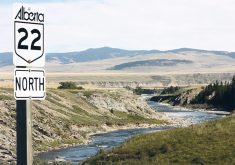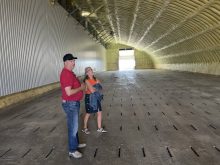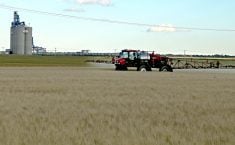None of Saskatchewan’s three main party leaders set foot on a farm during the first 12 days of official election campaign events.
Chances are they won’t during its final days, either.
“This election is being fought in Saskatoon and Regina,” said Ken Rasmussen, director of the Johnson-Shoyama Graduate School of Public Policy in Regina.
“The Saskatchewan Party is taking the rural vote for granted. The NDP knows it hasn’t had much support there for a while.”
Rasmussen said ignoring the rural vote won’t cost either party. The leaders are focusing their efforts on the undecided voters and the constituencies that they can sway before voting takes place Nov. 7.
Read Also

New coal mine proposal met with old concerns
A smaller version of the previously rejected Grassy Mountain coal mine project in Crowsnest Pass is back on the table, and the Livingstone Landowners Group continues to voice concerns about the environmental risks.
Education tax on property is one of the few issues leaders have addressed that directly affects farmers’ bottom lines. Both the NDP and the Saskatchewan Party chose to announce their plans in Regina. The Liberals announced their plan a month before the campaign began.
Liberal leader David Karwacki said Oct. 18 he would make some agricultural and rural announcements this week.
A day later, Saskatchewan Party leader Brad Wall rolled out his full platform. The agriculture portion includes pledges to fully fund the provincial share of the Canadian Agricultural Income Stabilization program up front and to immediately review crop insurance with a view to increasing coverage and reducing premiums.
The NDP was expected to release its full platform this week. Leader Lorne Calvert has announced an energy plan that includes help for farmers who want to establish small renewable energy projects.
Rasmussen said he wouldn’t expect to see much more.
“Ag policy at one time meant one thing: satisfying wheat growers,” he said.
The parties didn’t dare ignore the Saskatchewan Grain Growers’ Association, for example.
But as farmers diversified, they lost their political voice. They began to see themselves as small business operators. Smaller commodity-based organizations replaced larger ones. Farms got bigger and voting patterns changed.
“The NDP was for years the party of the farmers,” Rasmussen said.
“Now the NDP is the party of middle class professionals.”
As well, many of the issues farmers are dealing with or talking about, such as the Canadian Wheat Board’s monopoly, BSE or avian influenza, are Ottawa’s responsibility.
Still, some want to draw attention to agriculture during this campaign.
The department of bioresources policy, business and economics at the University of Saskatchewan planned an election forum on agricultural and rural issues Oct. 23, the same day the Agricultural Producers Association of Saskatchewan hosted a similar event in the same city.
Agriculture minister Mark Wartman, agriculture critic Bob Bjornerud and Liberal candidate for Thunder Creek Rod Haugerud were scheduled to present their parties’ agricultural platforms at the APAS forum.

















